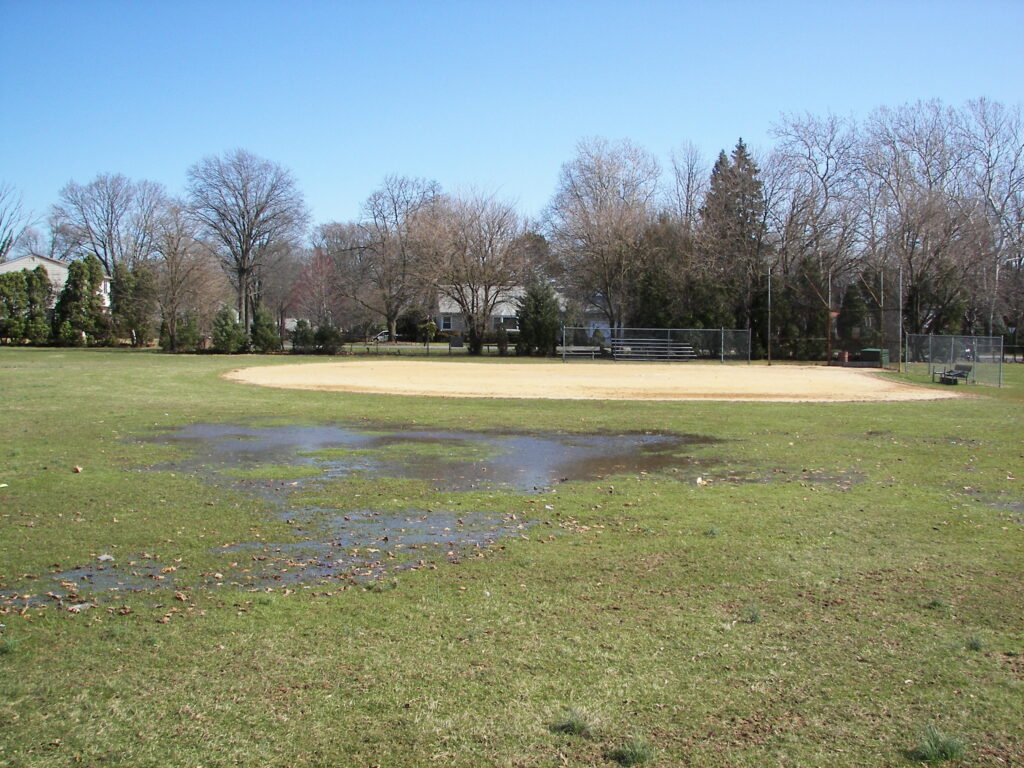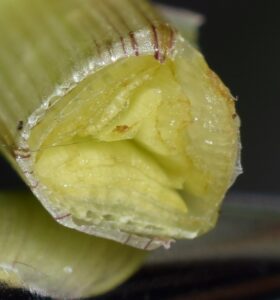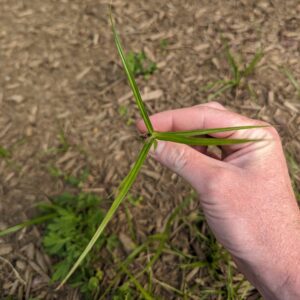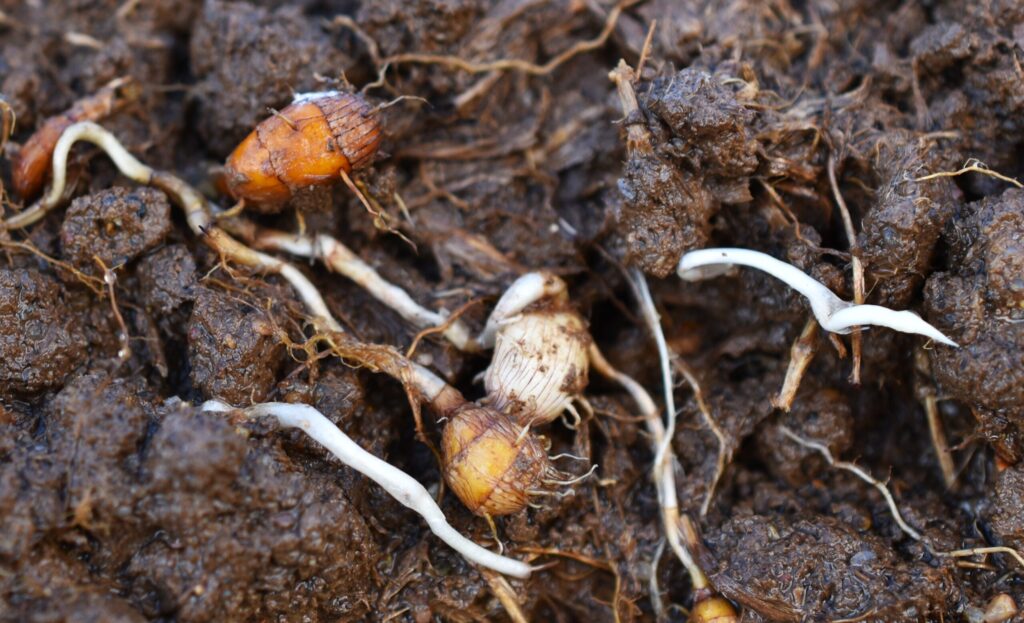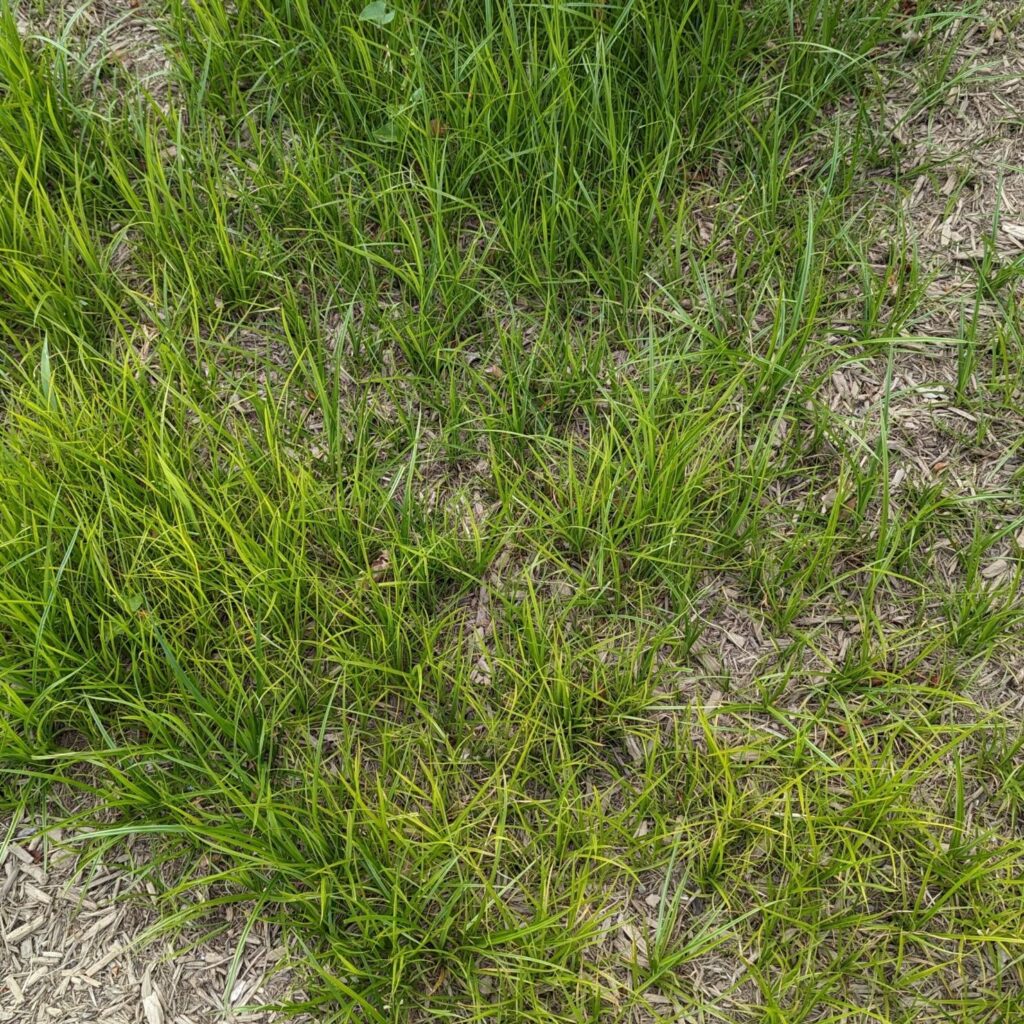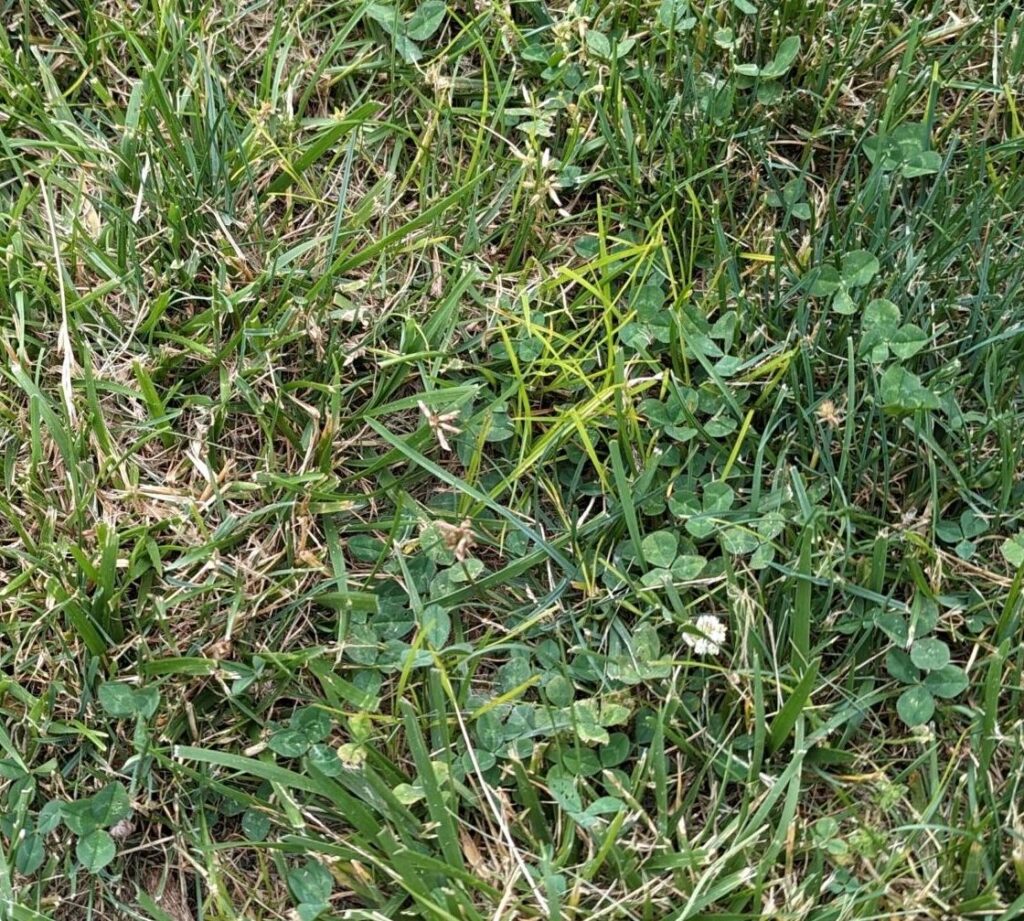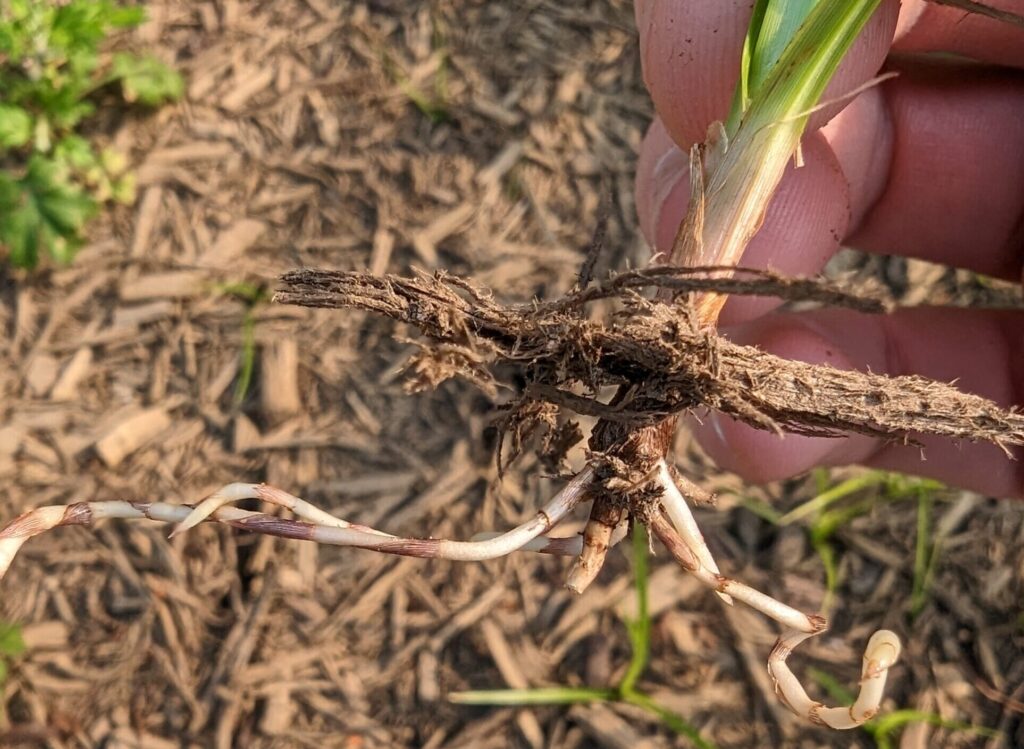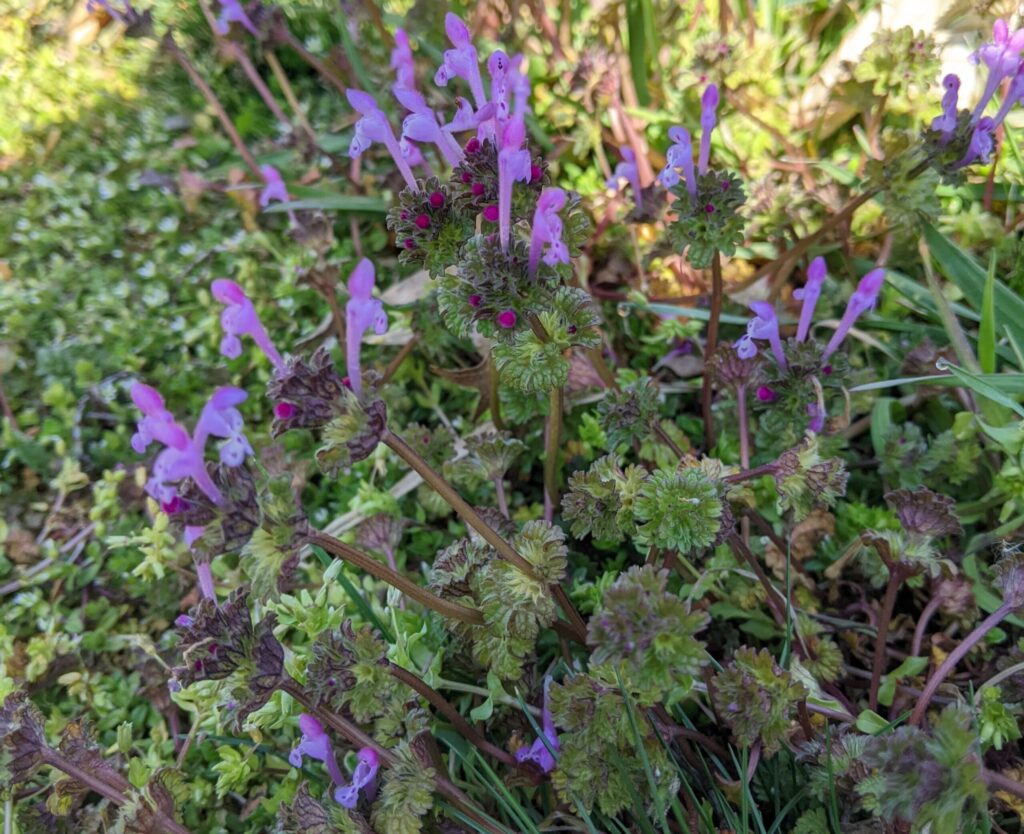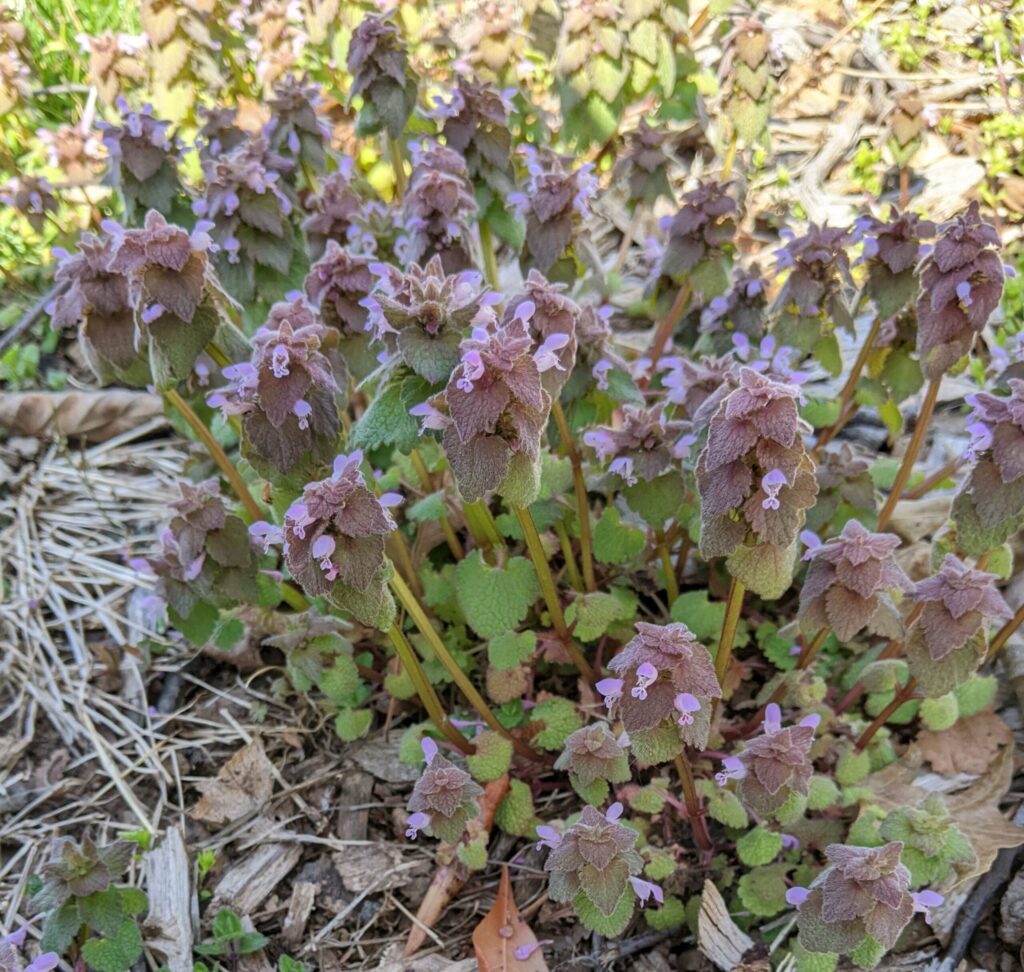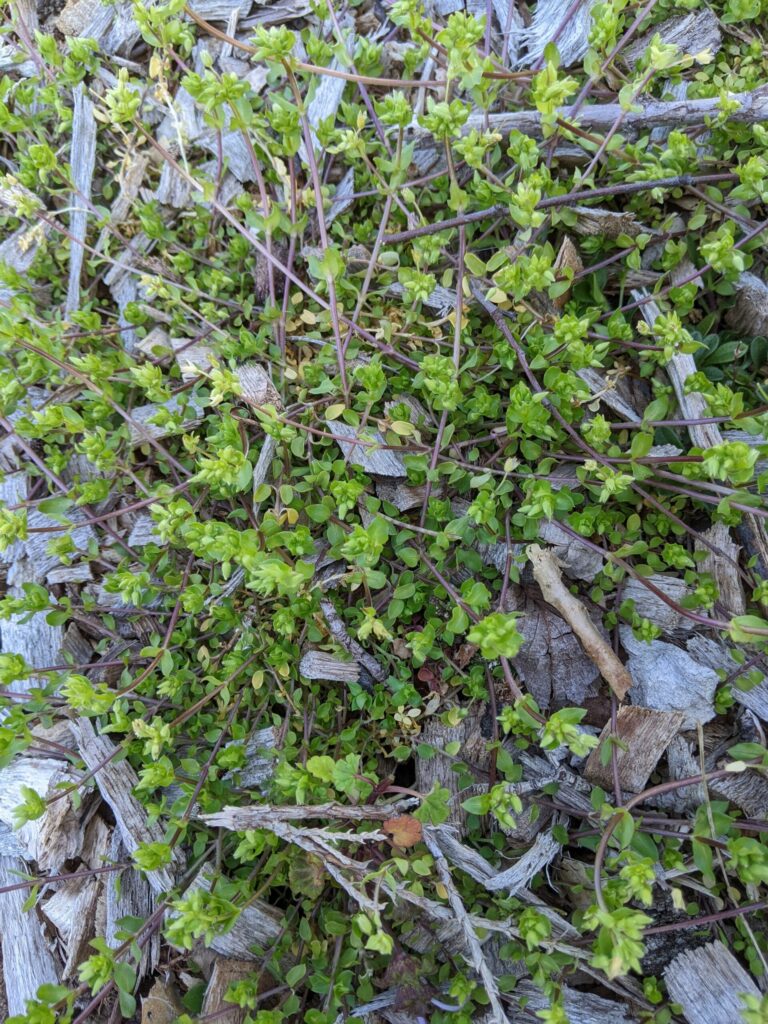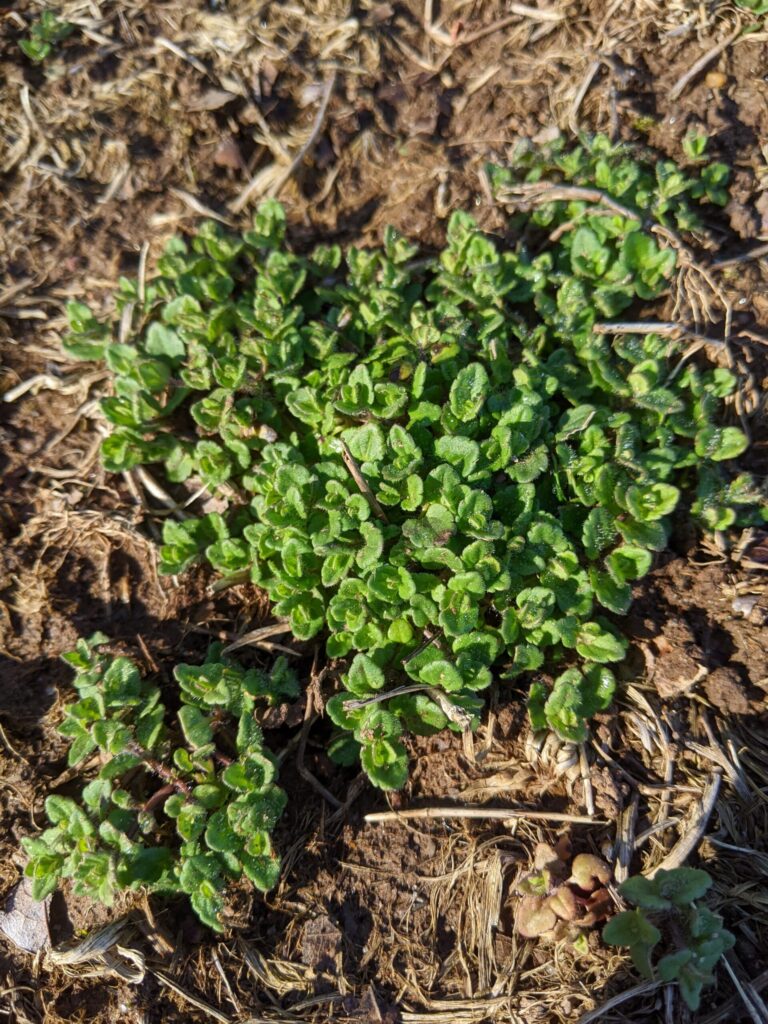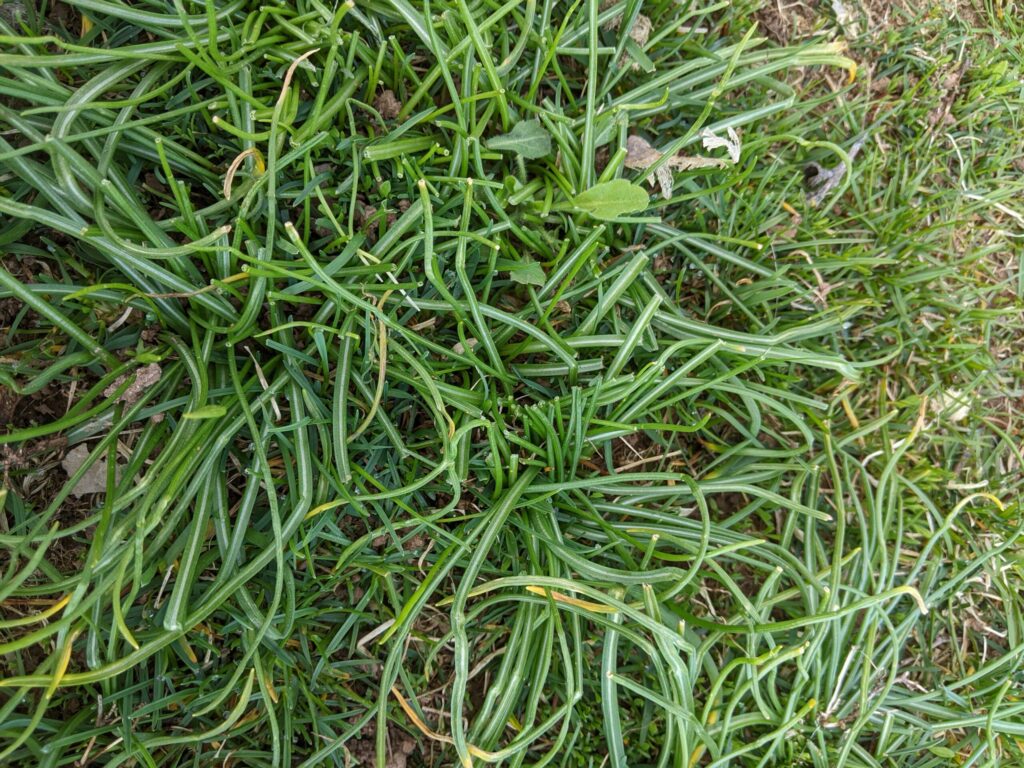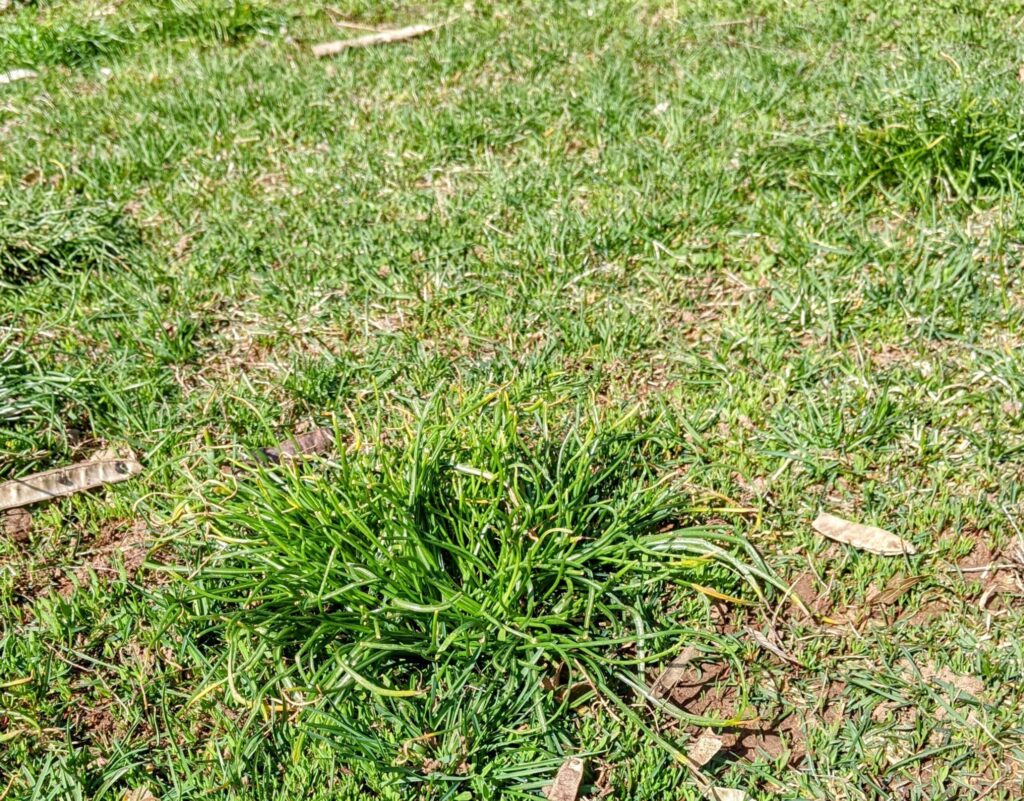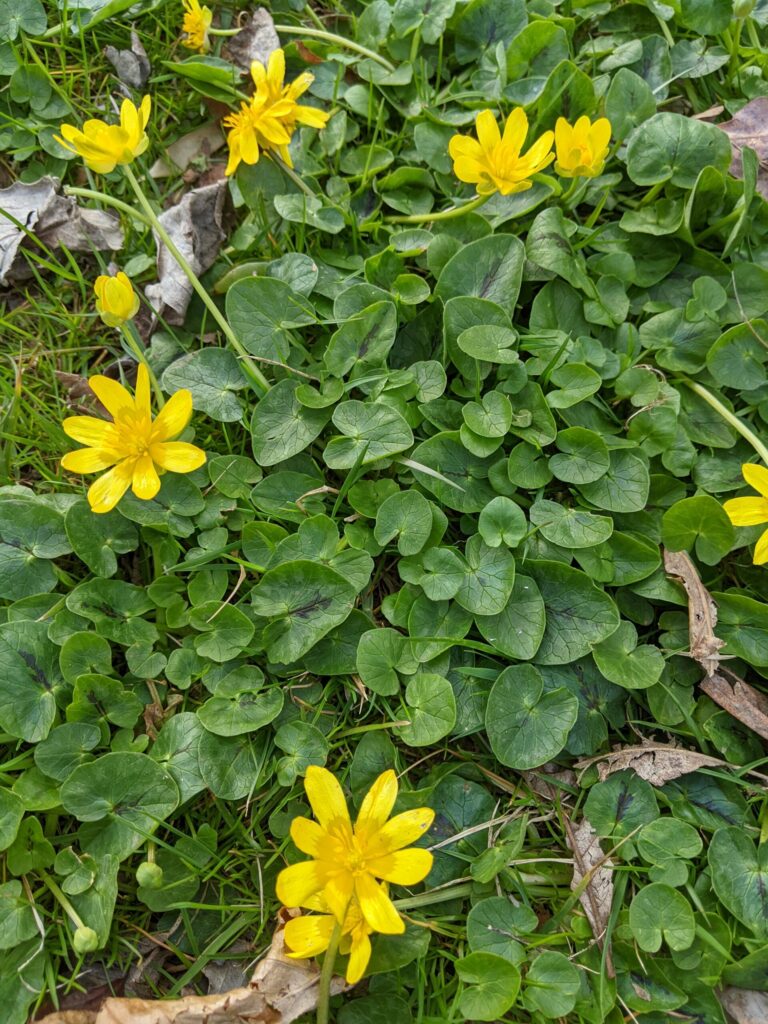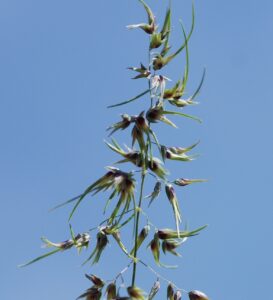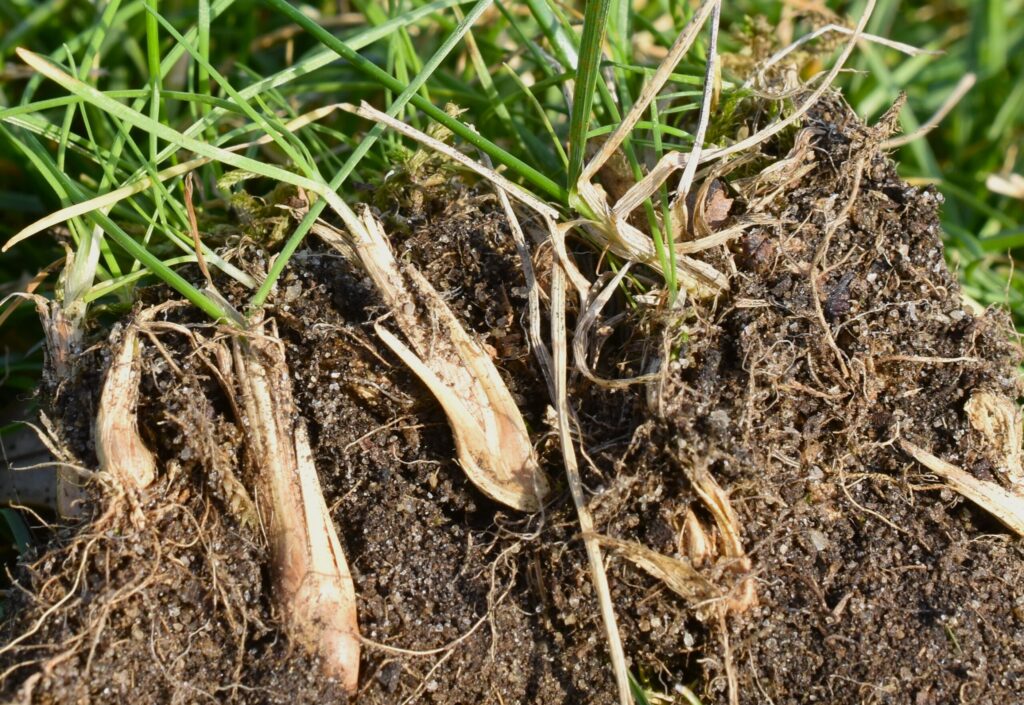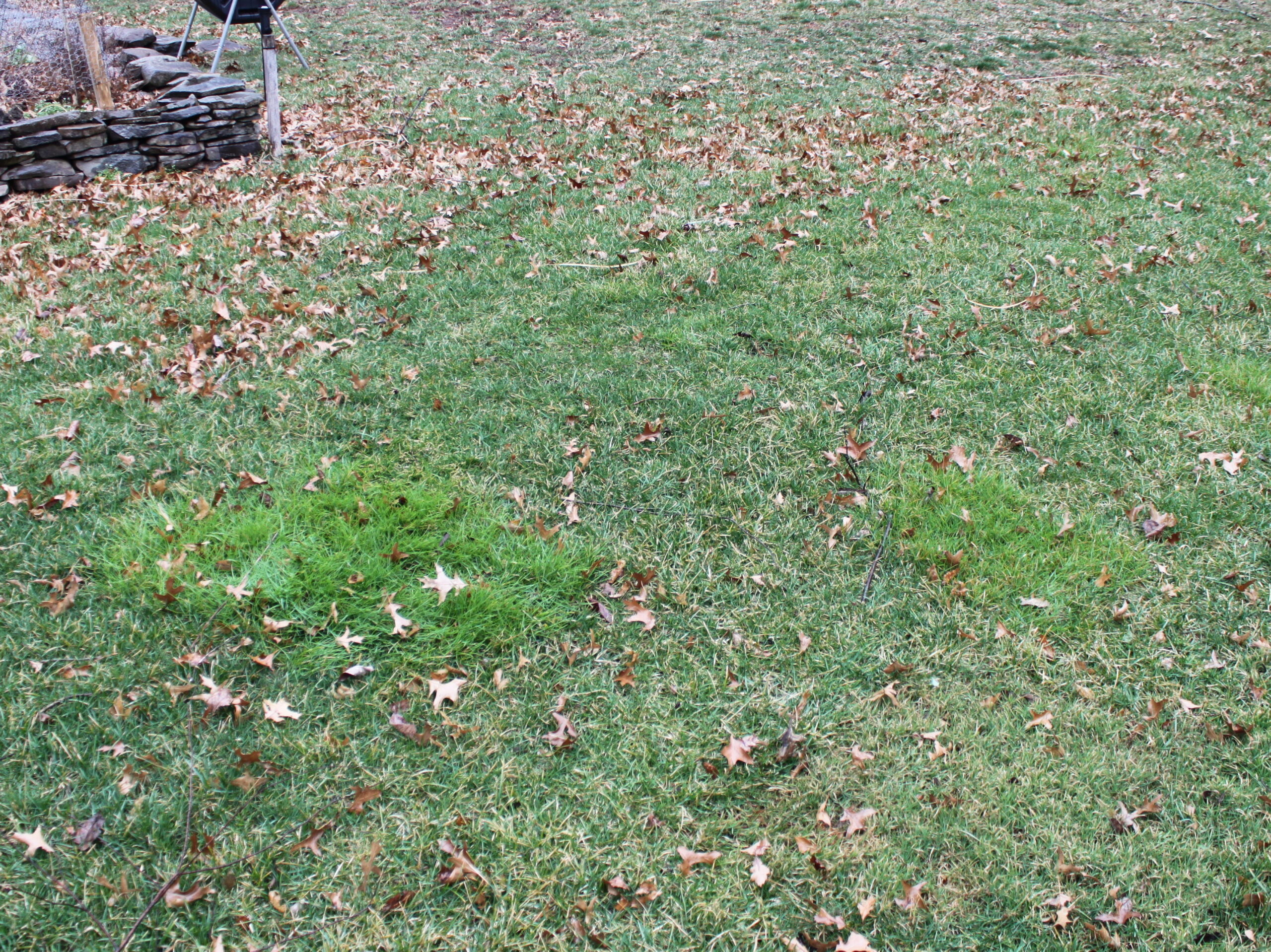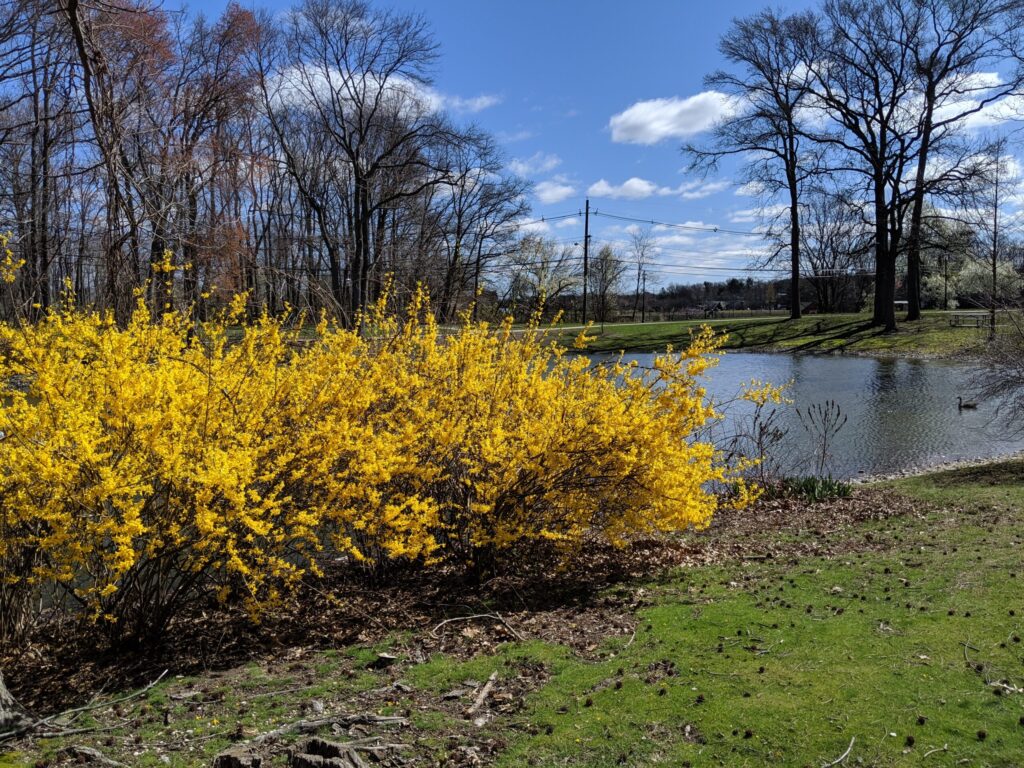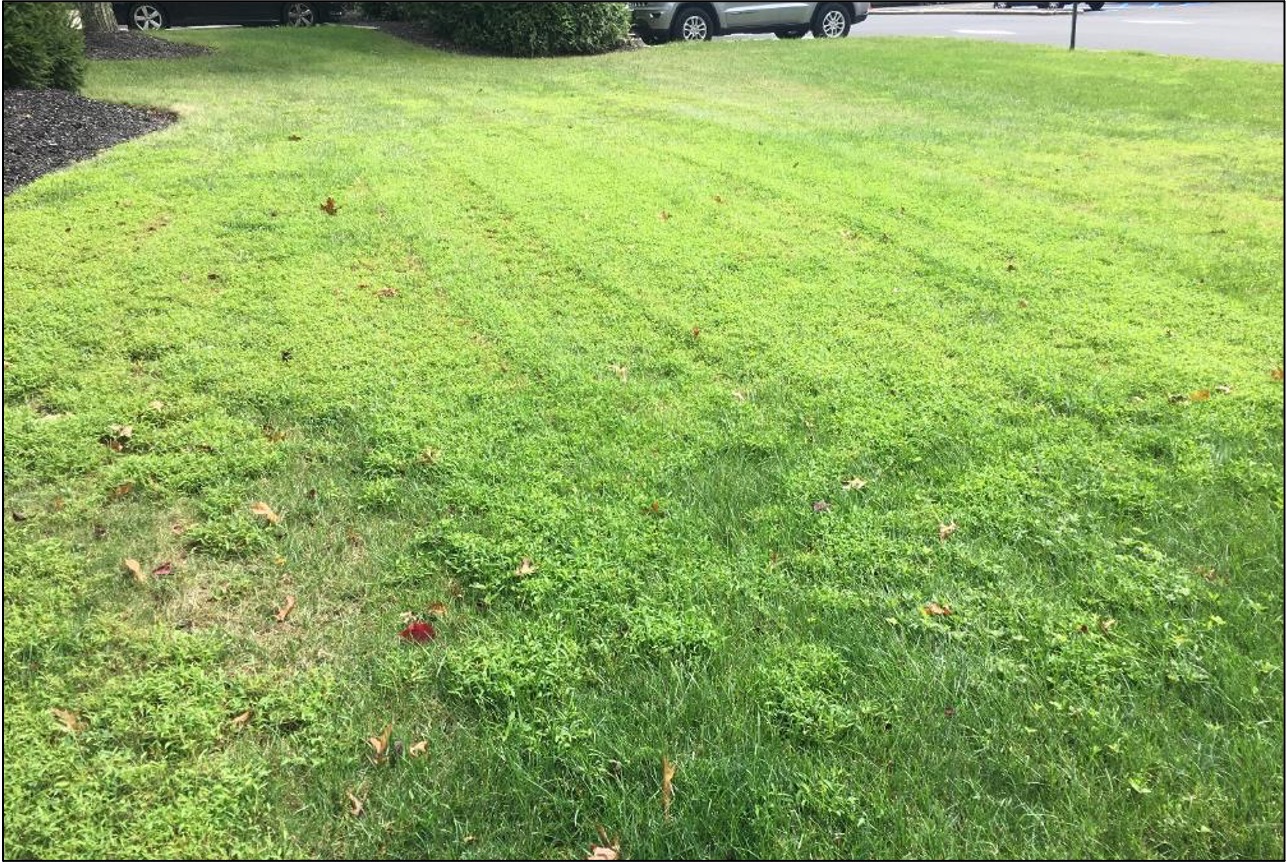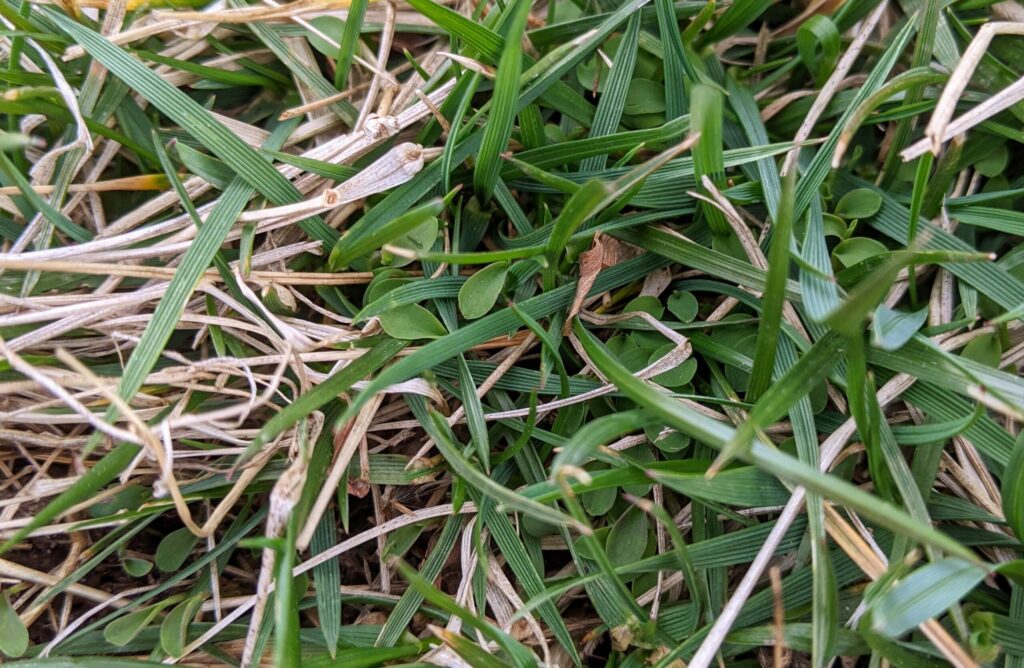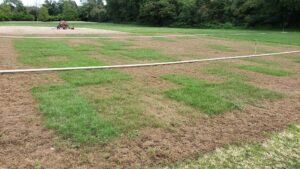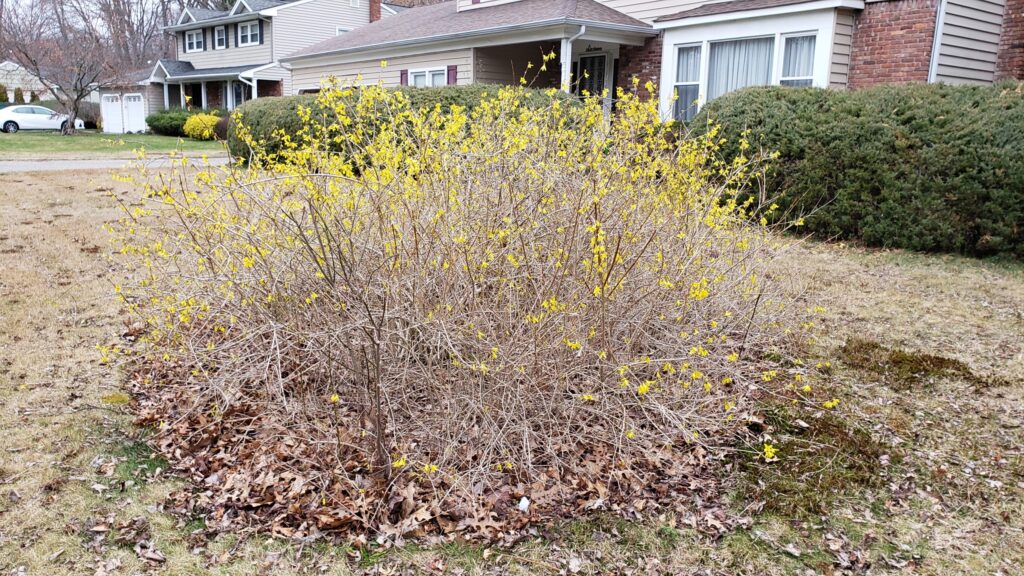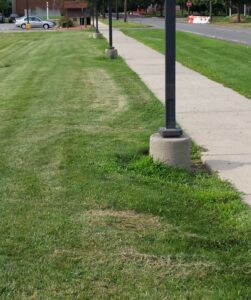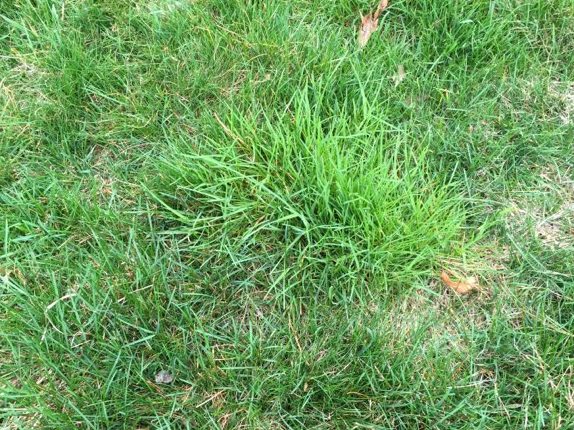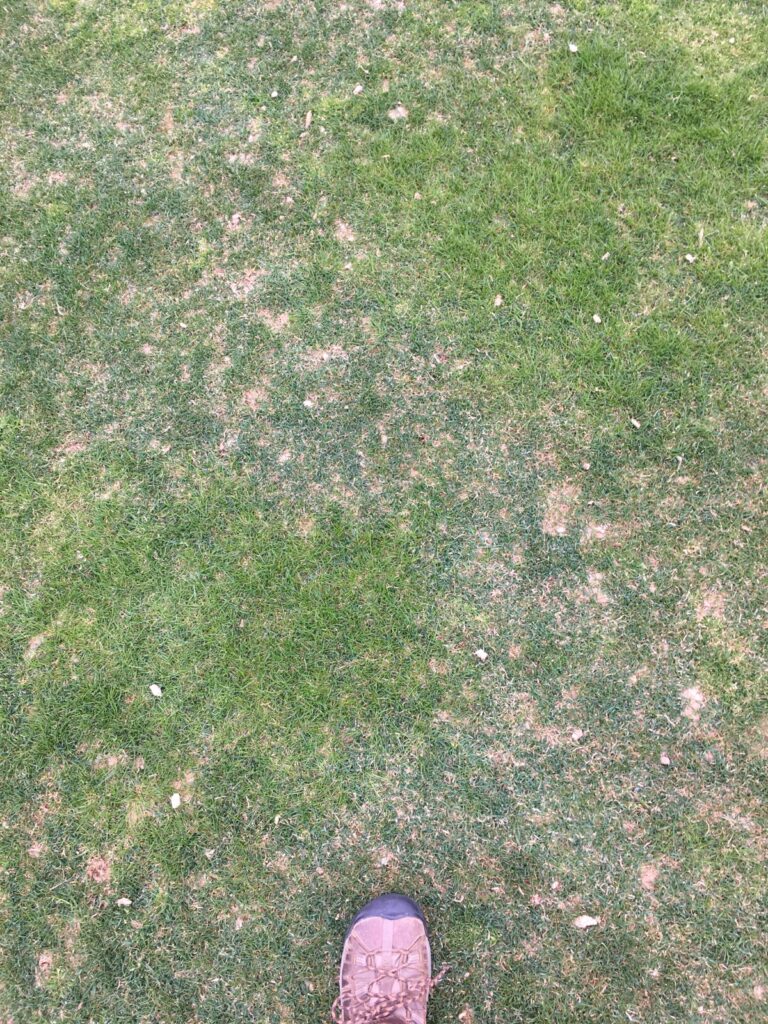Main Content
Cooler fall weather is a prime opportunity to control warm-season grassy weeds like nimblewill (Muhlenbergia schreberi). Fall is a particularly good time to control nimblewill because the increased competitiveness of cool-season turfgrass enhances the effectiveness of herbicide programs.
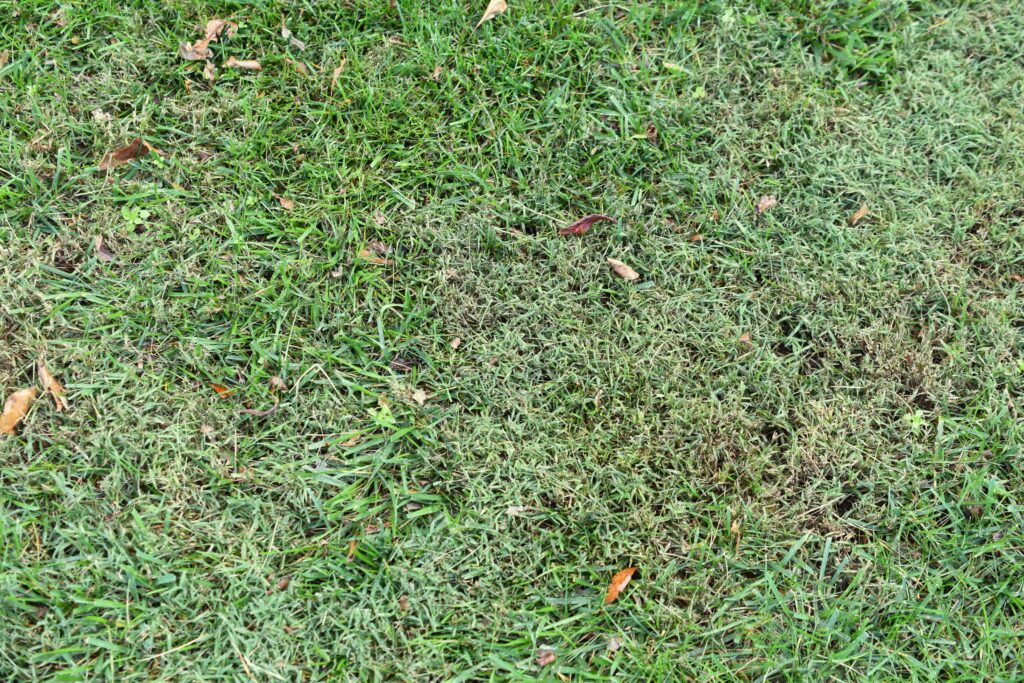
Nimblewill is a warm-season perennial grass that thrives in shady, moist environments but is commonly found in sunny areas as well. It spreads through stolons (above-ground runners) and can form dense mats, making it difficult to remove once established. Nimblewill is most obvious during the late fall and winter, as it turns brown and goes dormant at first frost, making it more noticeable in cool-season turf.
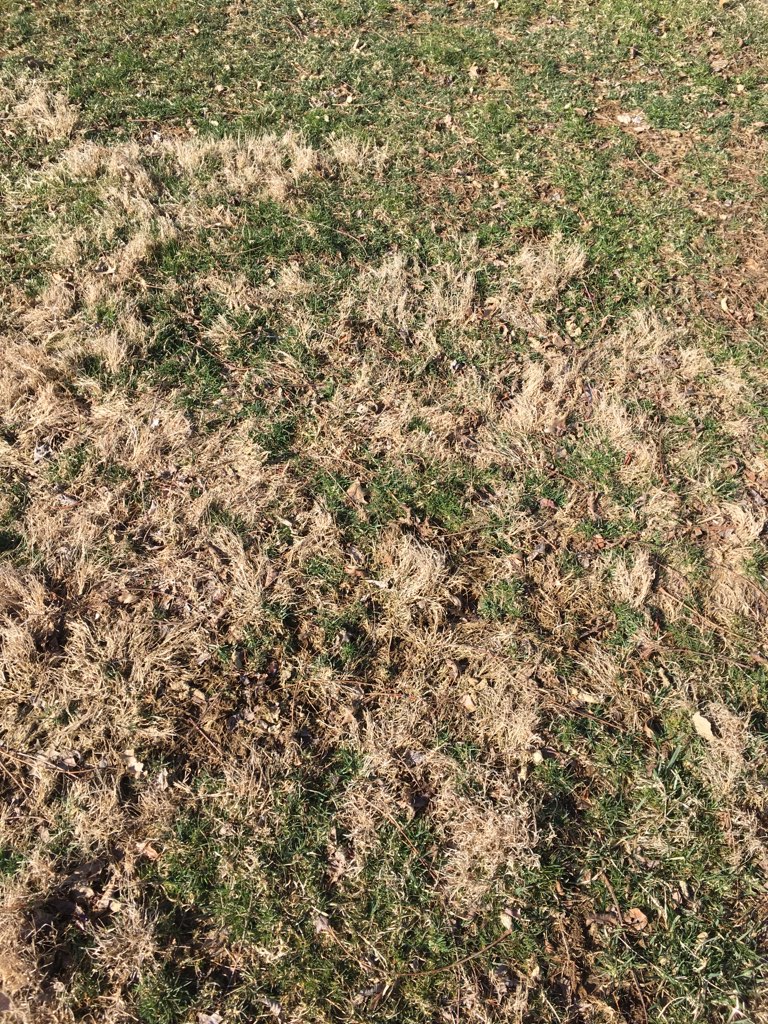
Nimblewill resembles both bentgrass and bermudagrass. Bermudagrass is also a perennial warm-season grass that goes dormant after the first frost, but is often found in sunny, drier areas. Bermudagrass is coarser and challenging to pull out of the ground than nimblewill, which has a shallower root system. While all three grasses spread through stolons, bermudagrass also has rhizomes, adding to its resilience. Bentgrass has thin stolons that creep along the ground. Nimblewill stolons appear wiry as they are often stems that fall to the ground and root at the nodes. Nimblewill often has a hairy collar, while the bentgrass collar lacks hairs, and bermudagrass hairs are more conspicuous. Nimblewill has a shorter membranous ligule than bentgrass, and the bermudagrass ligule is hairy.
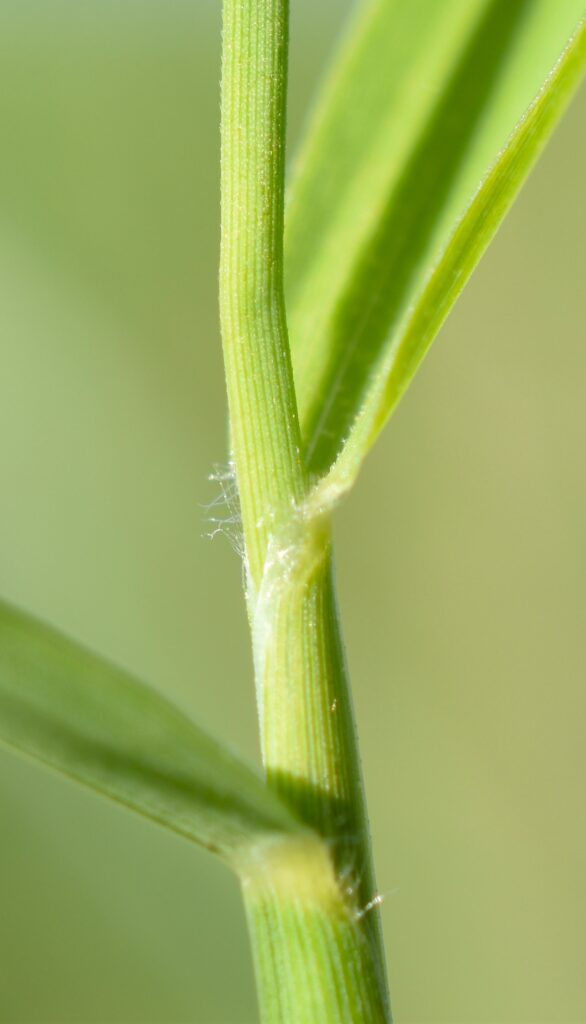
Selective herbicide options for nimblewill control include mesotrione (e.g., Tenacity), topramezone (Pylex) and SpeedZone (2,4-D + MCPP + dicamba + carfentrazone). Although SpeedZone is often considered a broadleaf weed herbicide, we found it provides nimblewill control when applied in September and October. Mesotrione and topramezone are more compatible with seeding of cool-season turfgrasses, but are less effective for broadleaf weed control than SpeedZone. Another option is a single application of the non-selective herbicide glyphosate if you plan to reseed. Regardless of the herbicide selected, a multi-application program over two years will provide more control than single applications, targeting regrowth from stolons and any nimblewill seedlings remaining in the soil seedbank after the perennial nodes are killed. In addition to herbicide programs, enhancing the competitiveness of desirable turfgrass should be part of an integrated approach. While this approach has not been evaluated for nimblewill control, large increases in long-term control of other warm-season perennial weeds including dallisgrass, bermudagrass, and false-green kyllinga have been found when fall seeding and herbicide programs are combined. For nimblewill, this integrated approach might include interseeding, or simply applying more nitrogen fertilizer (up to two applications of 0.9 lbs N/1000 ft2 in the fall) around herbicide applications if existing cool-season grass already mixed into patches of nimblewill. Check herbicide labels for compatibly with seeding.
